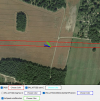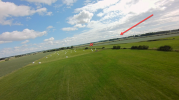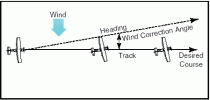Hi everyone. I'm trying to figure out something I haven't yet determined by trial and observation. I'm wondering if some of you could tell me if a gps equipped drone (Mavic 2 Pro) will fly a track or a heading given the following:
Thanx in advance for enhancing my wisdom.
- autopilot not programmed to fly to a waypoint
- good satellite reception
- strong crosswind at 90° to the heading
Thanx in advance for enhancing my wisdom.














